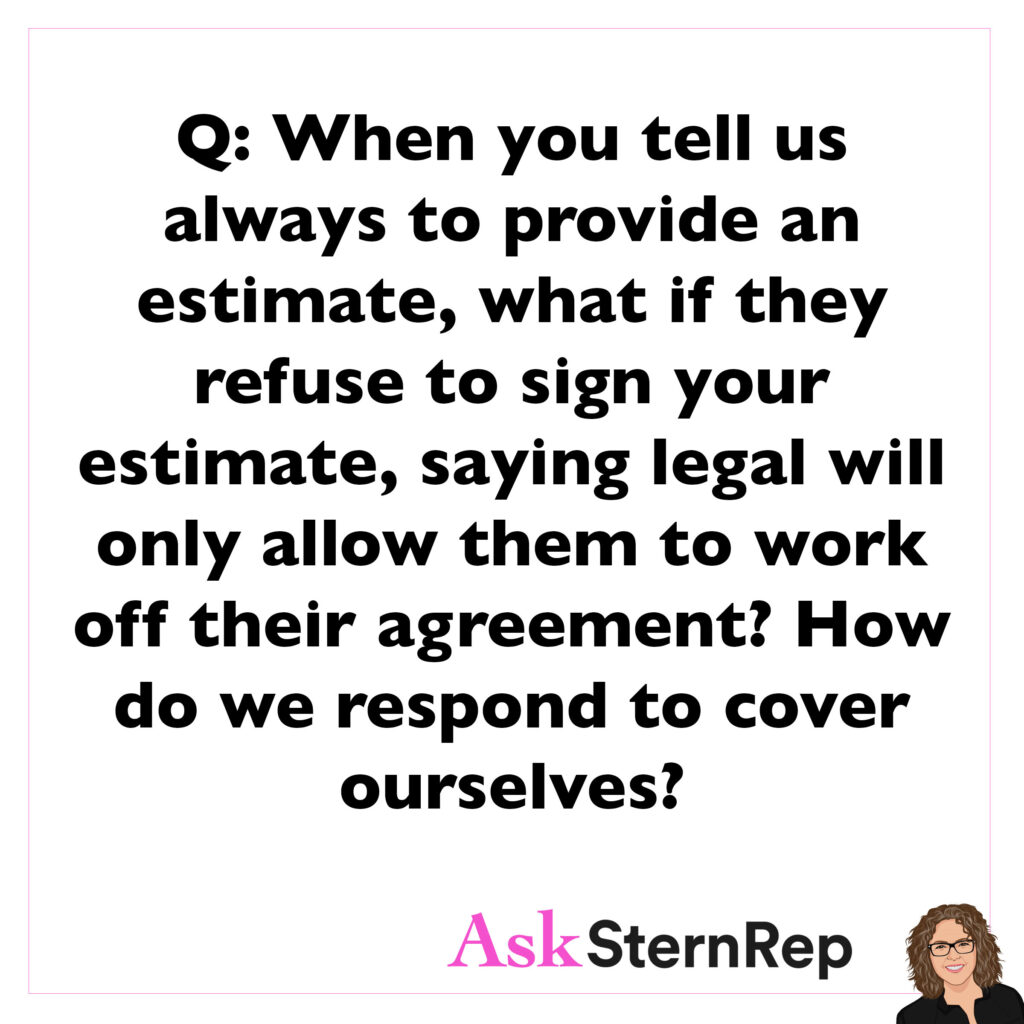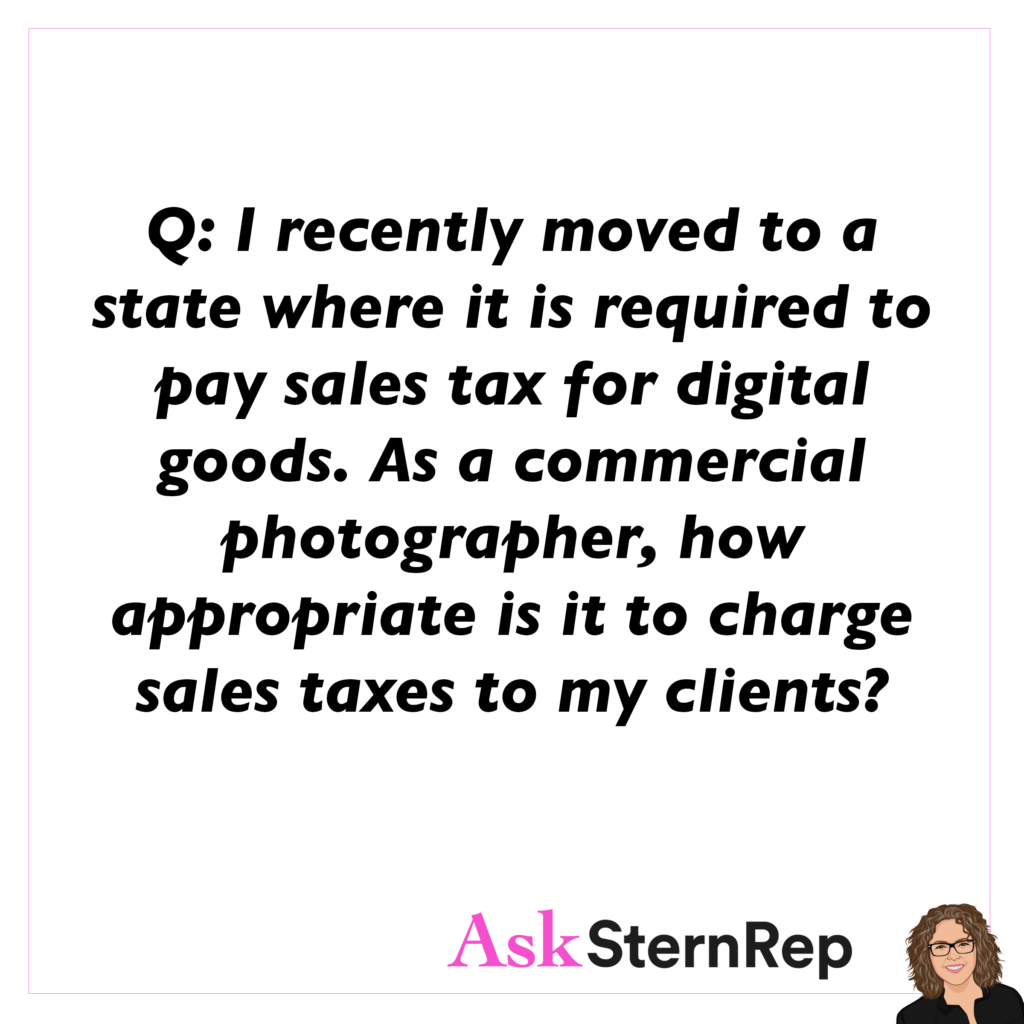
I know we all want to send correct estimates, but sometimes, not knowing all of the detailed bid info, I see the opportunity to get one more round of feedback after I submit the estimate. I use it to my advantage.

I know we all want to send correct estimates, but sometimes, not knowing all of the detailed bid info, I see the opportunity to get one more round of feedback after I submit the estimate. I use it to my advantage.
STOP WASTING TIME DOING ESTIMATES YOU DON’T NEED TO DO!
It’s wild how many bidding requests we get from random clients that don’t even pertain to us. We must find out the budget before we waste our time. Even though that is the exact info clients usually refuse to give us, we have to push through by asking if their budget is between certain amounts. That type of “yes/no” question usually sparks a client to respond if it’s over what they have available to spend. Give it a try.
Do not waste your time doing estimates you don’t need to do. Photographers should avoid wasting time on estimates and calculations for clients who may not have the budget for their services. Instead, photographers should ask for a budget range upfront, so they can quickly determine if the client’s budget aligns with their own rates. By doing this, photographers can avoid spending time on clients who cannot afford their services and focus on those who can. Self-employed photographers need to be mindful of their time and avoid wasting it on unproductive activities.
An estimate term that should be on the top of all bids: “Estimate is valid for 15 days from date of issue.” Don’t get stuck with prices that are no longer accurate.
The validity of an estimate for music services is only for 15 days from the date of issue. The pricing mentioned in the estimate cannot be regarded as valid for a year since prices can change due to various reasons. For example, if a client has a hold on a particular stylist and talent and they come in after three weeks, the prices might not be the same, and the people on hold might not be available. The estimate’s validity is crucial since there are many elements at play, and clients need to be aware of the timeline.
What is your specialty? One CREATIVE FEE component that may get overlooked in fee formula calculations is how much the client needs you for this campaign. The specialization you bring to a project goes a long way, and you should be paid for it.
When setting a creative fee for a project, it is important to consider how specific and unique your creative skills are to that particular project. This can involve evaluating whether your look or style matches the needs of the project better than others and whether your particular skills and experience make you the best fit for the job. By taking into account these factors, you can justify charging a higher creative fee for your work.
Retouching rates leave ambiguity when it’s based on per image, so one way to protect your time spent is to make it a day rate. As you track your time, the client can be aware of the image(s) progression and even try to speed it along, helping them achieve more out of that 10-hour day they are paying.
When pricing retouching fees, it is important to be careful as clients and photographers may have different interpretations of what is being done, what is being supplied, and how many revisions are allowed. Feedback can become intense if not priced accordingly. One way to handle this is to charge a day rate for one 10-hour day, based on time instead of production level or the number of images. This makes it more about the retoucher’s time rather than the amount of images being worked on.


When you tell us always to provide an estimate, what if they refuse to sign your estimate, saying legal will only allow them to work off their agreement? How do we respond to cover ourselves?
The norm is for larger clients and ad agencies NOT to sign our estimates/bids/contracts as their legal department controls the company decisions. We cover ourselves by carefully reading through their SOW (statement of work) agreement, not signing any terms contradicting our arranged policies. Our estimates still protect us if it comes down to a legal matter, so use the protection terms wisely as our backup.
Photographers’ overtime rates (after 10 hrs) are charges I was only using for the crew. Now I’m seeing some clients approve this as a normal request. I’m changing my bidding plan to include OT rate information (10-12 hrs= 1.5x hourly rate, after 12 hrs= 2x hourly rate) on every estimate.
The topic of whether photographers should charge overtime for themselves, not just their crew, is a new and uncertain area for many photographers. We put the question out to our Facebook group and received a variety of responses from different clients and photographers. Despite the differing opinions, we suggest that photographers should try to include overtime in their estimates and see if clients are willing to accept it.


I recently moved to a state where it is required to pay sales tax for digital goods. As a commercial photographer, how appropriate is it to charge sales taxes to my clients?
Sales tax laws have been changing, and no matter how you deliver your images, some states like Kentucky and Texas now require photographers to charge clients sales tax after we have invoiced them a certain amount.
If you know of a good resource for this, please share it in the comments.
Always provide an estimate. Don’t tip-toe around this when a client doesn’t request a bid from you. If all details are emailed to you, discussed on the phone, or you approve their pdf, send them your estimate to cover yourself with all potential mishaps.
When a client approaches you for a job and provides you with a contract, they may assume that all the necessary details are included. However, it is important to submit an estimate to ensure that both parties are on the same page. An estimate includes information on prices, what is covered, and what is not covered. It is also important to include a job description and details on any additional items such as travel expenses or equipment. By providing a clear estimate, you can avoid misunderstandings and ensure that the client understands what they are paying for. Even if the client does not ask for an estimate, it is highly recommended that you provide one.
Overages can be tricky. If you are on set or prepping on production, they ask for more, and you’d like to say yes, wait for that exact overage cost to be approved – preferably in a traceable email, signed estimate, or even their overage PO. The magic word is APPROVED. Get your overage cost approved BEFORE you begin spending that extra amount.
It is important to account for overages in estimating project costs. Overages refer to additional charges that may be incurred when changes are made to the original project specifications. We advise that overages should be approved by the client before they are incurred. For instance, if new props or backgrounds are added to a project, the client should be informed that additional fees will be incurred.